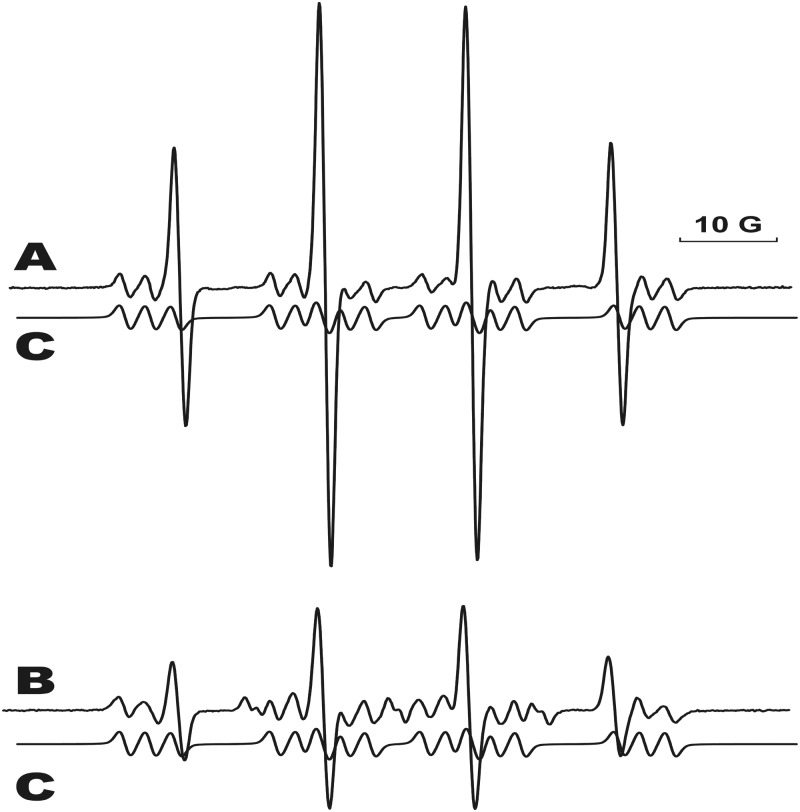Figure 1.
Formation of the radical-derived DMPO adduct from the reaction of an equimolar mixture of all four DNA nucleosides with CuCl2/H2O2 in the presence of DMPO. All components of the reaction must be present for the adduct formation. (A) The mixture contained 1 mM of all four DNA nucleosides, CuCl2 (300 μM), H2O2 (100 μM) and DMPO (100 mM) and was incubated at 37°C for 1 h. Instrumental conditions: modulation amplitude, 1.0 G; time constant, 327 ms; receiver gain, 2 × 104; and microwave power, 20 mW. (B) The EPR spectrum of the dAdo-DMPO radical derived from the reaction of adenosine with CuCl2/H2O2 in the presence of DMPO. (C) The computer simulation of the dAdo-DMPO adduct.

